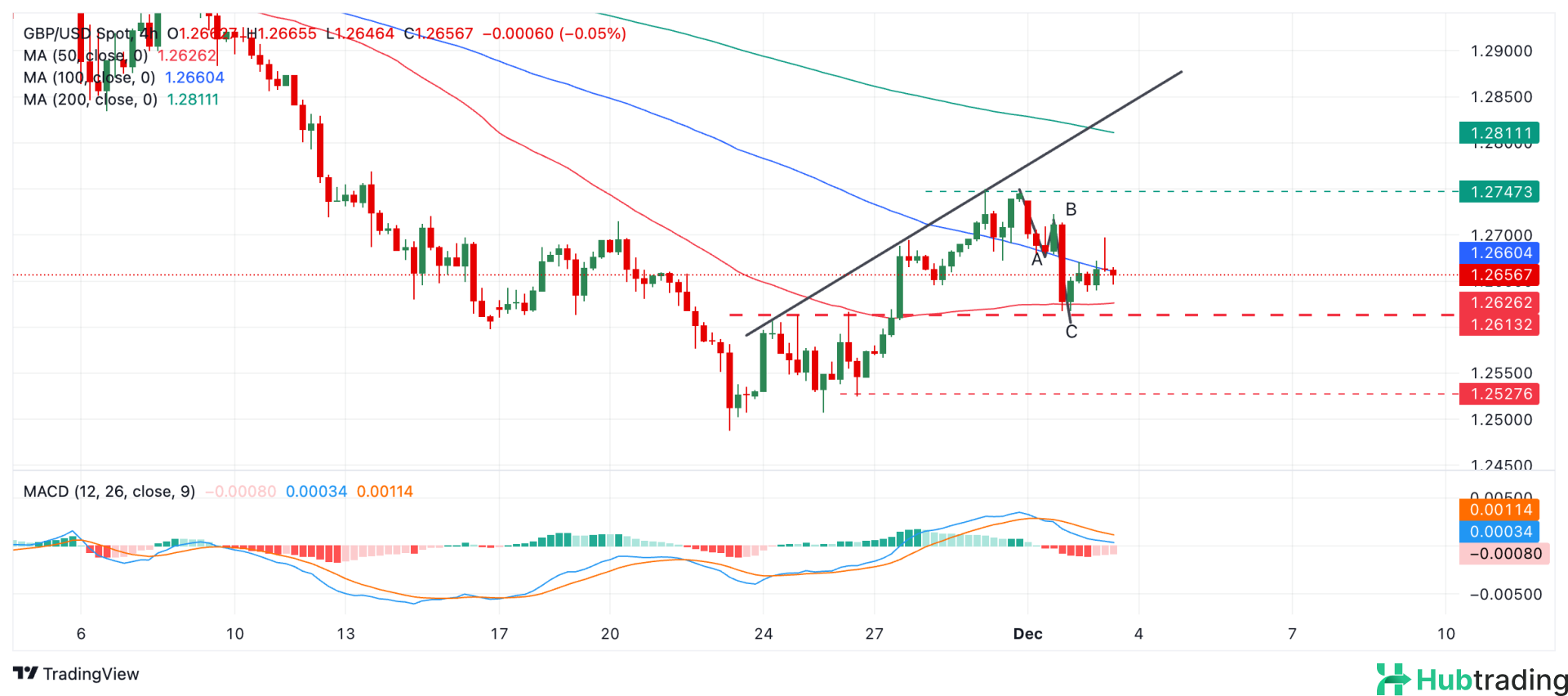- The Pound Sterling holds steady against the US Dollar as sentiment shifts in favor of its transatlantic counterpart.
- Weak UK economic data, showing reduced consumer spending in November, could cap any potential gains for the Pound.
- On the technical front, GBP/USD maintains its short-term uptrend but faces risks of a possible reversal.
The Pound Sterling (GBP) traded flat in the 1.2650s on Tuesday, stabilizing after Monday’s steep 0.71% decline driven by a combination of geopolitical risks and strong US data. The previous sell-off was spurred by tough rhetoric from US President-elect Donald Trump, who threatened 100% tariffs on BRICS nations unless they abandoned efforts to replace the US Dollar, and robust US PMI figures that boosted the Dollar.
However, the Greenback’s rally was capped by dovish remarks from Federal Reserve (Fed) officials. Fed Governor Christopher Waller stated he was leaning towards a rate cut in December, raising market expectations of a 25-basis-point cut to 76%, according to the CME FedWatch tool. While lower rates typically weaken the Dollar, the Pound struggled to capitalize due to weak UK fundamentals.
Disappointing UK Data Weighs on the Pound
The Pound’s recovery was hindered by lackluster UK economic data. On Monday, UK Manufacturing PMI for November fell to a nine-month low of 48.0, missing expectations. This was followed on Tuesday by British Retail Consortium (BRC) data revealing a surprising 3.4% drop in November retail sales, far below forecasts. These weak readings reinforced expectations of a Bank of England (BoE) rate cut in December, casting doubt on GBP/USD’s ability to sustain gains.
Political Uncertainty Adds to Sterling’s Woes
The Pound also faced pressure from developments in France, where political instability surrounding Prime Minister Michel Barnier’s government and a potential vote of no confidence rattled markets. This widened the yield spread between UK Gilts and German Bunds to levels not seen since Liz Truss’s premiership, further dampening sentiment for GBP.
Technical Analysis: GBP/USD at a Crossroads
GBP/USD rebounded modestly after Monday’s sell-off, potentially completing an ABC corrective pattern, keeping the short-term uptrend from November 22 intact. However, the pair remains vulnerable
GBP/USD 4-hour Chart

A break above 1.2750 would target 1.2824, aligning with the 200-period Simple Moving Average (SMA).
A break below 1.2617, the key support level, would confirm a reversal, opening the door to further declines toward 1.2527 and 1.2487.
The Moving Average Convergence Divergence (MACD) indicator shows bearish signals, with its blue line below the red signal line, suggesting further downside risk. While the short-term trend remains bullish, medium-term indicators point to bearish momentum, adding complexity to the overall outlook.
Traders are closely watching Tuesday’s US JOLTS jobs data and speeches from Fed officials, including San Francisco Fed President Mary Daly and Chicago Fed President Austan Goolsbee, for further clues on GBP/USD’s trajectory.





